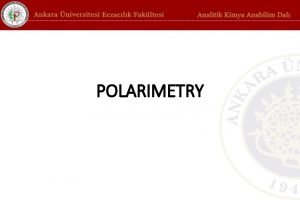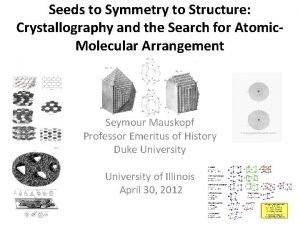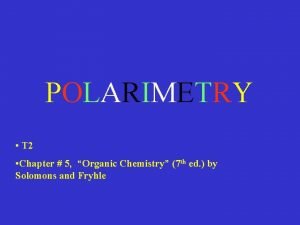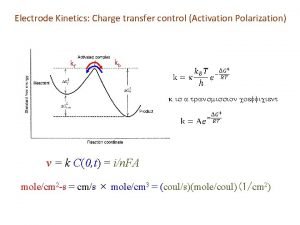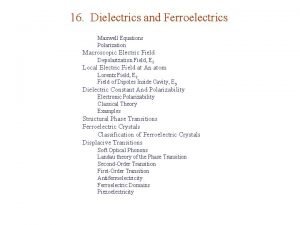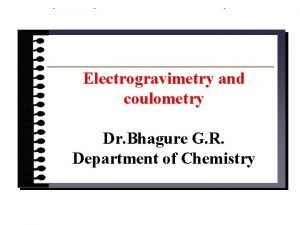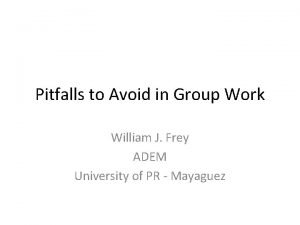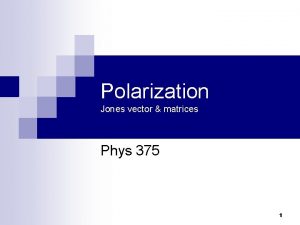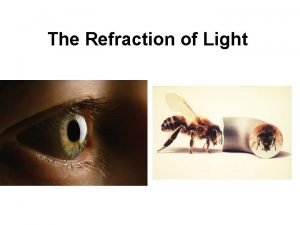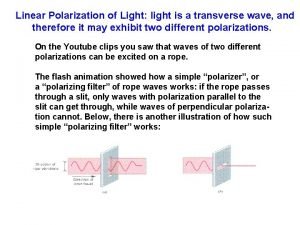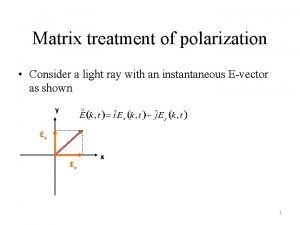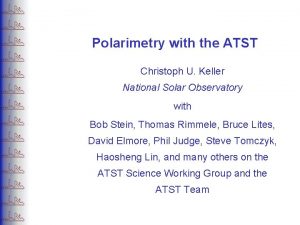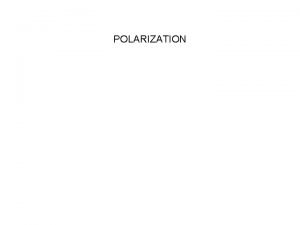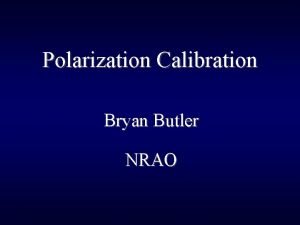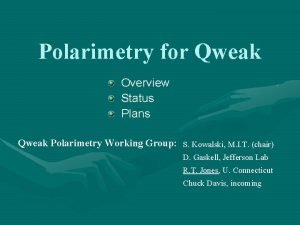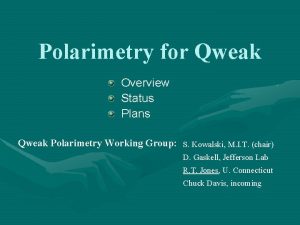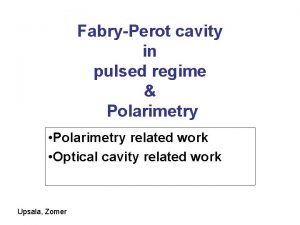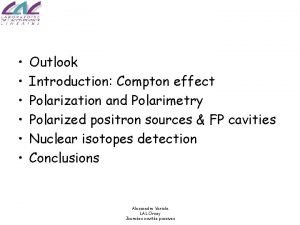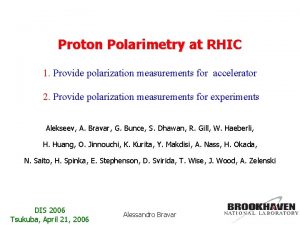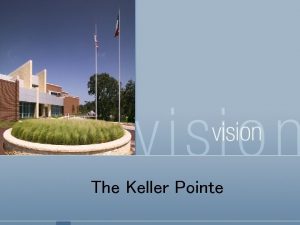Polarimetry Christoph Keller Polarimetry Requirements Polarization sensitivity amount















- Slides: 15

Polarimetry Christoph Keller

Polarimetry Requirements • Polarization sensitivity: amount of fractional polarization that can be detected above a (spatially and/or spectrally) constant background, a relative measurement: 10 -5 • Polarization accuracy: absolute error in measured fractional polarization, an absolute measurement: 5· 10 -4 • Derived telescope polarization requirements: – < 1% instrumentally induced polarization at all wavelengths before polarization modulation (to keep second-order effects small enough to achieve required polarization sensitivity) – Instrumental polarization calibration error: < 5· 10 -4 (to achieve polarization accuracy requirement) – Instrumental polarization stability: < 5· 10 -4 within 15 min (to achieve polarization accuracy requirement)

Side-Note: 2 nd Order Effects • Taking into account first-order effects only, polarimetric sensitivity better than 10 -4 is difficult to achieve • Influence of seeing: mostly I to Q, U, V and Q, U, V to Q, U, V cross-talk • Influence of camera non-linearity, dark-current and bias fluctuations • Influence of (polarized) scattered light

Gregorian Focus • Instrumental polarization due to off-axis optics • Aluminum coating at 400 nm • Polarization effects depend on wavelength, field of view, coating properties and age • Instrumental polarization fixed with respect to telescope • Instrumental polarization rotates with respect to image

Gregorian Wavelength Dependence Gregorian I to Q Requirement Science I, V to Q Requirement

Gregorian Time Dependence

Coudé Time Dependence

Temporal Polarization Change • Gregorian: up to 0. 05 in 15 minutes around noon in coordinate system fixed with image, but constant in telescope coordinate system • Coudé: up to 0. 5 in 15 minutes around noon • Only Gregorian focus in telescope coordinate system fulfills specifications

Distributed Polarimetry • <1% instrumental polarization before modulation and less than 5· 10 -4 change in 15 minutes polarization modulation close to Gregorian focus • Only a single beam can be sent to coudé because AO cannot handle two beams • Strongly polarizing transfer optics Calibration polarizers close to Gregorian • Coronal instruments: compact, no need for adaptive optics, fast beam at Gregorian instrument station • On-disk instruments: large, need for AO correction, slow beam on coudé platform

Polarization Optics in Gregorian • Polarization calibration (rotating polarizers and retarders for different wavelength ranges) • Focal masks for alignment and tests • Polarization modulators (and analyzers) for different wavelength ranges, space for visiting polarimeter • Telescope optics will be adjusted according to inserted optics

Turret at Gregorian Focus

Telescope Polarization Issues • Telescope polarization rotates with respect to solar image • Telescope polarization depends on field position • Telescope polarization depends on wavelength • Optical properties of coatings will change (slowly) in time • Coatings might not be uniform across mirror surface(s) • Must calibrate telescope polarization accurately enough to meet science specifications • Based on experience with existing strongly polarizing telescopes, we expect that ATST telescope will meet polarization science requirements

Measuring Telescope Polarization • Find a way to measure instrumental polarization with sufficient accuracy to meet science requirements at all wavelengths and at all times • Study coating uniformities on large telescopes • Estimate complexity of such measurements (required instrumentation and time)

Realistic Mueller-Matrix Model • Create Mueller-matrix model of all-reflective telescope that includes aluminum coatings with thin aluminum-oxide overcoat • Measure instrumental polarization to determine free parameters of model • Determine required IP measurement frequency • Determine most suitable wavelength(s) for IP measurements • Test model and measurement approaches

Polarimetry Error Budget • Classical error tree approach does not work because ‘leaves’ are non-linearly coupled • Example: non-linearity of CCD camera and telescope polarization couple multiplicatively • No good approach available yet • Will work out a potential approach and apply it to telescopes and instruments
 Polarimetry definition in chemistry
Polarimetry definition in chemistry Biots law polarimetry
Biots law polarimetry Polarimetry organic chemistry
Polarimetry organic chemistry Activation polarization
Activation polarization Group polarization vs groupthink
Group polarization vs groupthink Ferroelectric
Ferroelectric Concentration polarization
Concentration polarization Unit 14 social psychology
Unit 14 social psychology Group polarization example
Group polarization example Phys 375
Phys 375 In a curved optical fiber light
In a curved optical fiber light Ingroup bias
Ingroup bias Membrane separation
Membrane separation Linear polarization
Linear polarization Jones vector elliptical polarization
Jones vector elliptical polarization Group polarization example
Group polarization example
